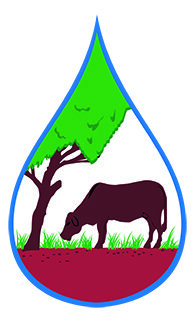Fact Sheets
The Dalrymple Landcare Committee work closely with primary producers, professionals in the Department of Agriculture and Fisheries, experts in land management, soil health and pasture management to bring the most up to date information to members.
Bellyache Bush
Bellyache bush (Jatropha gossypiifolia) is often confused with castor oil plant (Ricinus communis). Both plants are frequently found in the same area.
Captain Cook Bush (Cascabella thevetia). If left uncontrolled, Captain Cook tree can threaten sustainable pasture production and the environment. All parts of the plant are poisonous, especially the seeds that can be fatal if ingested.
Chinee Apple (Ziziphus mauritiana)
Dense infestations of chinee apple (or Indian jujube) create impenetrable thickets that seriously hamper stock management and reduce pasture production and accessibility.
Giant Rats Tail
Giant Rats Tail Grass (Sporobolus pyramidalis)
Rat’s tail grasses are invasive grasses that can reduce pasture productivity, out-compete desirable pasture grasses and cause significant degradation of natural areas.
Harrisia cactus (Eriocereus spp.) can form dense infestations that will reduce pastures to a level unsuitable for stock. Harrisia cactus will choke out other pasture species when left unchecked.
Lantana (Lantana camera) forms dense thickets that smother and kill native vegetation and are impenetrable to animals, people and vehicles.
Mimosa bush (Acacia farnesiana) can spread readily and grow quickly. As it often forms thorny thickets, it can be a considerable nuisance during mustering and can also hinder stock access to water.
Noogoora Burr (Xanthium pugens) is found along river and creek flats, on roadsides and in pasture land following seasonal rain or floods
Parkinsonia (Parkinsonia aculeata) can form dense impenetrable thorny thickets along river courses, bore drains, floodplains and grasslands. This makes land inaccessible for people and animals, restricts stock access to drinking water, decreases the amount of pasture available and excludes native vegetation.
Parthenium (Parthenium hysterophorus) is a vigorous species that colonises weak pastures with sparse ground cover. It will readily colonise disturbed, bare areas along roadsides and heavily stocked areas around yards and watering points.
Prickly Acacia (Acacia nilotica) infestations favour bore drains and water courses where trees spread out onto adjacent grassland. Trees along bore drains use valuable water, make maintenance of bore drains more costly, and provide seed to further increase the spread of prickly acacia.
Rubber vine (Cryptostegia grandiflora)’s ability to quickly spread and colonise areas makes it a threat to many areas of northern Australia.
Siam Weed (Chromolaena odorata) is considered one of the world’s most invasive weeds. It threatens the grazing industry, agricultural production systems (particularly horticultural crops such as bananas, pawpaw and sugarcane) and forestry plantations.
Snake Weed (Stachytarpheta spp.) becomes a problem when ground cover is eliminated or reduced. In pastures, it is a definite indication of overstocking.
This list is by no means extensive. If you have a plant of concern, do not hesitate to bring a sample Tropical Weeds Research Station in Charters Towers
27-43 Natal Downs Road
Charters Towers
for thorough identification.
would you like some more information? Here’s some handy online tools…
infopest.com.au – Register and search by weed name for registered herbicides
youtube.com/user/BiosecurityQld – Videos on weed ID and control techniques
https://www.facebook.com/biosecurityqld/
For all weeds facts and information: Biosecurity QLD
weeds.org.au – for info on weeds in your area
Queensland herbarium and how to collect and send specimen















